January 8, 1945: As the temperatures stay extremely low, weapons have to be maintained and truck engines run every half-hour to prevent their oil from congealing.
January 8, 1945: As the temperatures stay extremely low, weapons have to be maintained and truck engines run every half-hour to prevent their oil from congealing.
The offensive moves forward regardless, and the Allies continue to push the Germans back, reducing the dangerous salient into the Allied front line. Allied forces eliminate German positions on the west bank of the Maas River.
In the Ardennes, American forces now control 9 miles of the Laroche-St. Vith road. US 3rd Army captures Flamierge, 9 km north-west of Bastogne, on the southern flank of the German held salient. Meanwhile, in Alsace, the battles north and south of Strasbourg continue. The US 7th Army is under considerable pressure near Rimling, Aschbach, Gambsheim, Dresenheim, Rohrweiler, and Herrlisheim.
January 8th saw three different men, fighting in different locations along the front, awarded America’s highest award for valor. These citations give us some idea of the intensity of the individual battles being fought on this day:
In Dahl, Luxembourg, Sergeant Day G. Turner leads his squad in the defense of a house against an intense German attack. Fighting hand-to-hand at times, the squad successfully repulses the Germans and takes dozens of prisoners. Turner is later promoted to Staff Sergeant, but is killed in combat exactly one month after his actions in Dahl. He was posthumously awarded the Medal of Honor on June 28, 1945 and buried at the Luxembourg American Cemetery and Memorial. Sergeant Turner's official Medal of Honor citation reads:
“He commanded a 9-man squad with the mission of holding a critical flank position. When overwhelming numbers of the enemy attacked under cover of withering artillery, mortar, and rocket fire, he withdrew his squad into a nearby house, determined to defend it to the last man. The enemy attacked again and again and were repulsed with heavy losses. Supported by direct tank fire, they finally gained entrance, but the intrepid sergeant refused to surrender although 5 of his men were wounded and 1 was killed.
He boldly flung a can of flaming oil at the first wave of attackers, dispersing them, and fought doggedly from room to room, closing with the enemy in fierce hand-to-hand encounters. He hurled handgrenade for handgrenade, bayoneted 2 fanatical Germans who rushed a doorway he was defending and fought on with the enemy's weapons when his own ammunition was expended. The savage fight raged for 4 hours, and finally, when only 3 men of the defending squad were left unwounded, the enemy surrendered.
Twenty-five prisoners were taken, 11 enemy dead and a great number of wounded were counted. Sgt. Turner's valiant stand will live on as a constant inspiration to his comrades. His heroic, inspiring leadership, his determination and courageous devotion to duty exemplify the highest tradition of the military service.”
Pinned down at the base of snow-covered Hill 616, a steep hill in Alsace-Lorraine near Kaysersberg, France, Technical Sergeant Russell E. Dunham begins crawling more than 100 yards to the first machine gun nest under fire from two machine guns and supporting riflemen. When 10 yards from the nest, he jumps up to assault the nest and is hit by a bullet which causes him to tumble 15 yards downhill.
He gets back up and charges the nest firing his carbine as he goes, and kicks aside an egg grenade that lands at his feet. Prior to reaching the nest, he tosses a hand grenade into the nest. When he gets to the nest, he kills the machine gunner and his assistant. His carbine then jammed, and he jumps into the machine gun emplacement. He throws a third German in the nest down the hill who is later captured by his unit. With his carbine jammed, he picks up another carbine from a wounded soldier and advancs on the second nest, 50 yards away.
As he comes within 25 yards of the nest, he lobs two hand grenades into the nest, wiping it out. He follows this up by firing down fox holes used in support of the nest. He then begins his slow advance on the third nest, 65 yards up the hill. He makes his advance on the third nest under heavy automatic fire and grenades. As he comes within 15 yards of the nest, he tosses more grenades and wipes out the last nest, barely being missed at point blank range by a German rifleman. During the action, Dunham killed nine Germans, wounded seven and captured two on his own.
Nearly 30 other Germans were captured as a result of his actions. Technical Sergeant Russell E. Dunham's official Medal of Honor citation reads:
“For conspicuous gallantry and intrepidity at risk of life above and beyond the call of duty. At about 1430 hours on 8 January 1945, during an attack on Hill 616, near Kayserberg, France, T/Sgt. Dunham single-handedly assaulted 3 enemy machine guns.
Wearing a white robe made of a mattress cover, carrying 12 carbine magazines and with a dozen hand grenades snagged in his belt, suspenders, and buttonholes, T/Sgt. Dunham advanced in the attack up a snow-covered hill under fire from 2 machine guns and supporting riflemen. His platoon 35 yards behind him, T/Sgt. Dunham crawled 75 yards under heavy direct fire toward the timbered emplacement shielding the left machine gun.
As he jumped to his feet 10 yards from the gun and charged forward, machine gun fire tore through his camouflage robe and a rifle bullet seared a 10-inch gash across his back sending him spinning 15 yards down hill into the snow. When the indomitable sergeant sprang to his feet to renew his 1-man assault, a German egg grenade landed beside him. He kicked it aside, and as it exploded 5 yards away, shot and killed the German machine gunner and assistant gunner.
His carbine empty, he jumped into the emplacement and hauled out the third member of the gun crew by the collar. Although his back wound was causing him excruciating pain and blood was seeping through his white coat, T/Sgt. Dunham proceeded 50 yards through a storm of automatic and rifle fire to attack the second machine gun. Twenty-five yards from the emplacement he hurled 2 grenades, destroying the gun and its crew; then fired down into the supporting foxholes with his carbine dispatching and dispersing the enemy riflemen.
Although his coat was so thoroughly blood-soaked that he was a conspicuous target against the white landscape, T/Sgt. Dunham again advanced ahead of his platoon in an assault on enemy positions farther up the hill. Coming under machinegun fire from 65 yards to his front, while rifle grenades exploded 10 yards from his position, he hit the ground and crawled forward. At 15 yards range, he jumped to his feet, staggered a few paces toward the timbered machinegun emplacement and killed the crew with hand grenades.
An enemy rifleman fired at pointblank range, but missed him. After killing the rifleman, T/Sgt. Dunham drove others from their foxholes with grenades and carbine fire. Killing 9 Germans—wounding 7 and capturing 2—firing about 175 rounds of carbine ammunition, and expending 11 grenades, T/Sgt. Dunham, despite a painful wound, spearheaded a spectacular and successful diversionary attack.”
During a German attack in Rimling, France, Technical Sergeant Charles F. Carey, Jr organizes and leads a series of patrols against the enemy forces. With his patrols, he rescues American soldiers who have been attacked or surrounded, captures a house and sixteen prisoners, and disables an enemy tank. He is killed by a sniper on January 9,. For these actions, he was posthumously awarded the Medal of Honor six months later in July 1945. Technical Sergeant Carey's official Medal of Honor citation reads:
“He was in command of an antitank platoon when about 200 enemy infantrymen and 12 tanks attacked his battalion, overrunning part of its position. After losing his guns, T/Sgt. Carey, acting entirely on his own initiative, organized a patrol and rescued 2 of his squads from a threatened sector, evacuating those who had been wounded. He organized a second patrol and advanced against an enemy-held house from which vicious fire issued, preventing the free movement of our troops. Covered by fire from his patrol, he approached the house, killed 2 snipers with his rifle, and threw a grenade in the door.
He entered alone and a few minutes later emerged with 16 prisoners. Acting on information he furnished, the American forces were able to capture an additional 41 Germans in adjacent houses. He assembled another patrol, and, under covering fire, moved to within a few yards of an enemy tank and damaged it with a rocket. As the crew attempted to leave their burning vehicle, he calmly shot them with his rifle, killing 3 and wounding a fourth.
Early in the morning of January 9, German infantry moved into the western part of the town and encircled a house in which T/Sgt. Carey had previously posted a squad. Four of the group escaped to the attic. By maneuvering an old staircase against the building, T/Sgt. Carey was able to rescue these men.
Later that day, when attempting to reach an outpost, he was struck down by sniper fire. The fearless and aggressive leadership of T/Sgt. Carey, his courage in the face of heavy fire from superior enemy forces, provided an inspiring example for his comrades and materially helped his battalion to withstand the German onslaught.”
Over Germany, US 8th Air Force attacks transportation targets with 604 bombers, of which two lost and US 15th Air Force attacks transportation lines around Graz, Klagenfurt, Salzburg, and Villach with more than 300 bombers.
On the eastern front, the 6th Guards Tank Army of Soviet 2nd Ukrainian Front attacks toward Komarom. The Soviet 2nd Ukrainian Front continues assaulting Buda and Pest and the German III Panzer Korps continues counterattacking toward Budapest.
In Italy, there’s little action. The US 12th Air Force remains mostly grounded by poor weather conditions, but fighters conduct 33 sorties against targets in the Po Valley
Pictured: Americans of the 101st Engineers near Wiltz, Luxembourg, January 8, 1945.; Bed sheets donated by villagers camouflage 6th Armored Division vehicles south of Neffe.; Gravestone of Medal Of Honor recipient Day G. Turner the Luxembourg American Cemetery and Memorial.; Medal of Honor recipient Russell E. Dunham, he died on April 6, 2009.; Gravestone of Medal Of Honor recipient Charles F. Carey, Jr at the Ardennes American Cemetery in Neupré, Belgium.





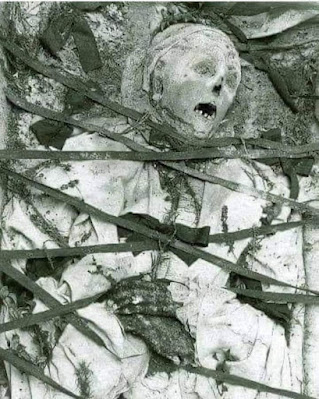
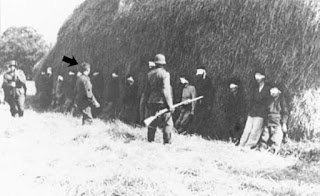

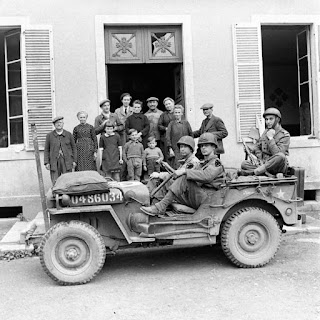




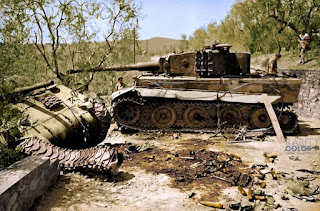
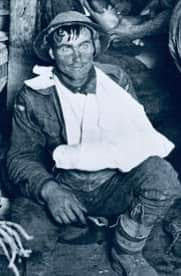
Comments
Post a Comment